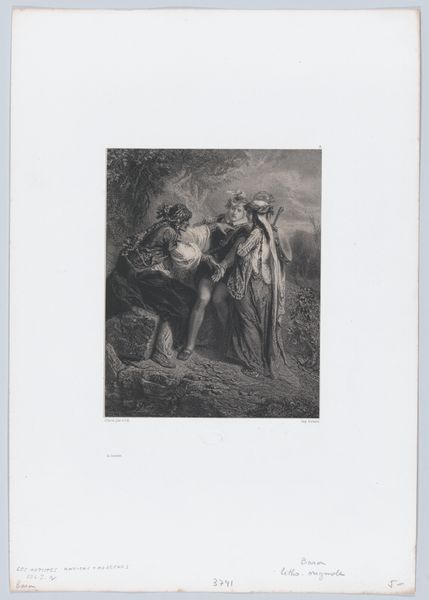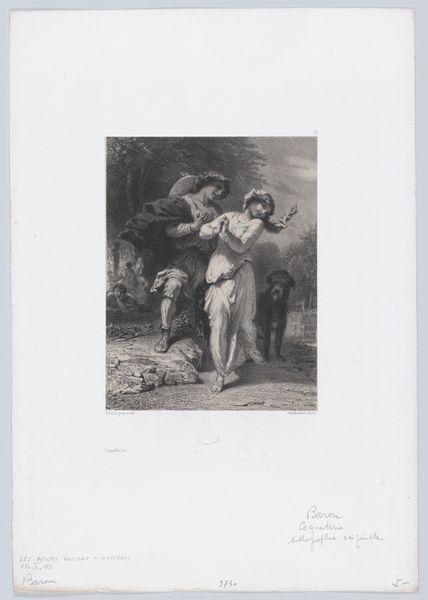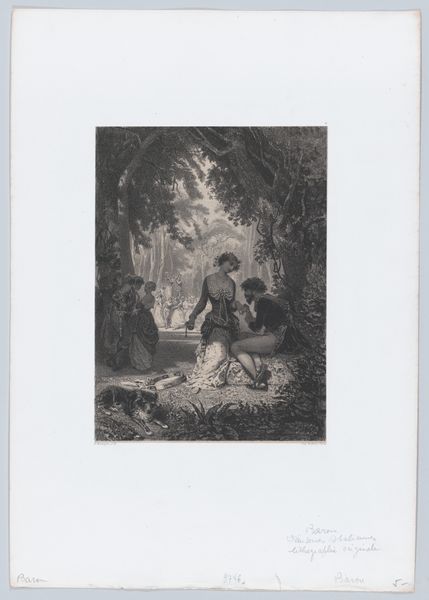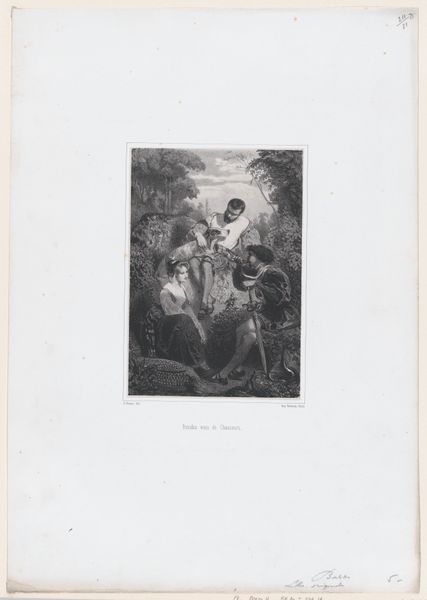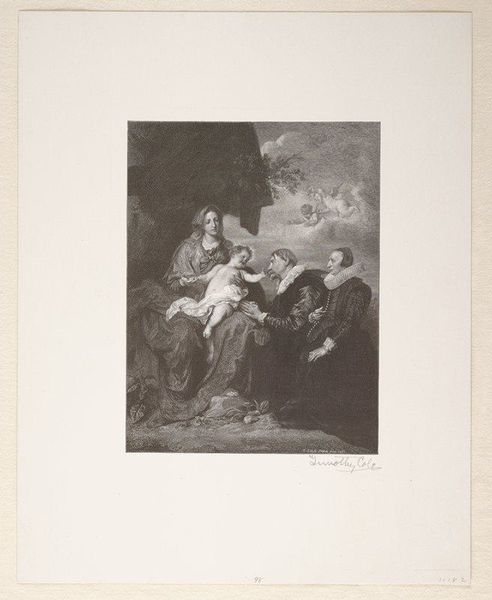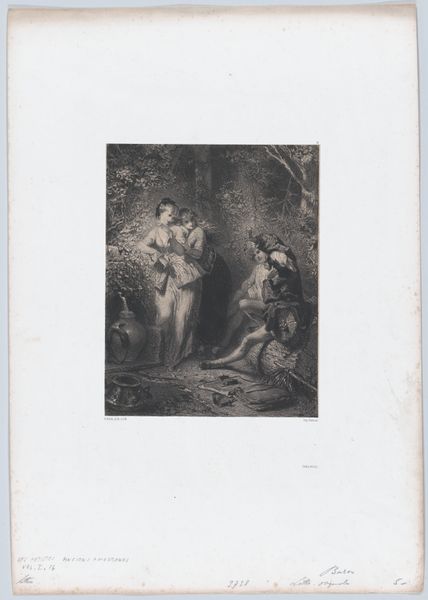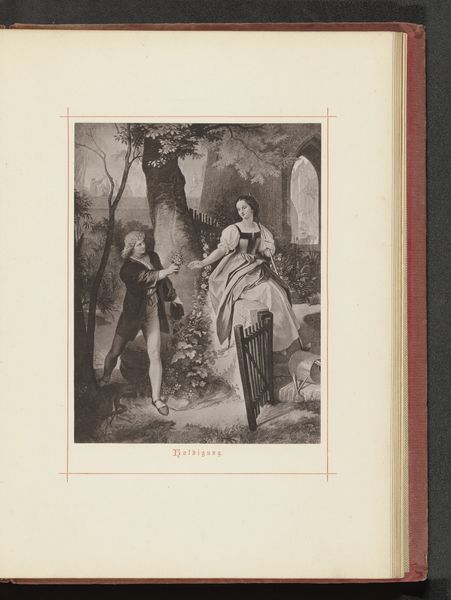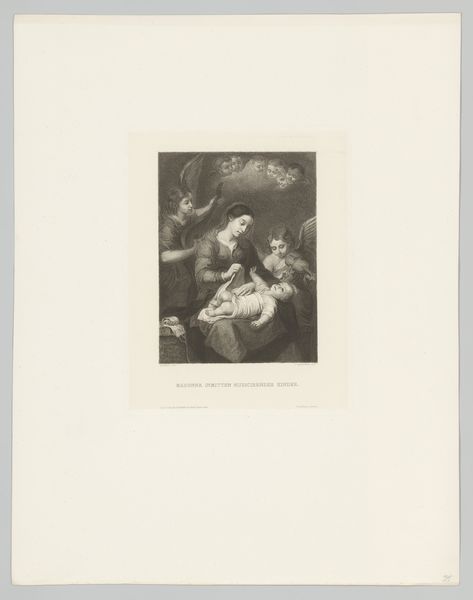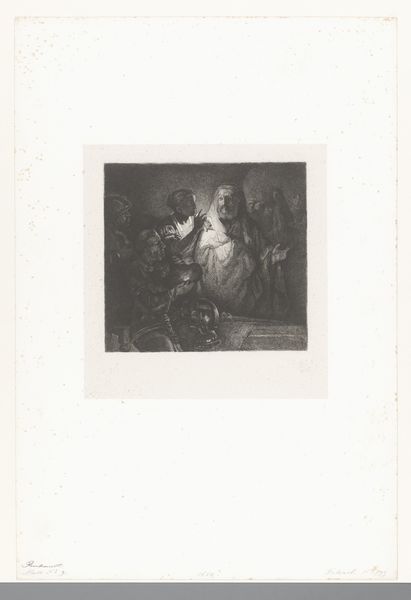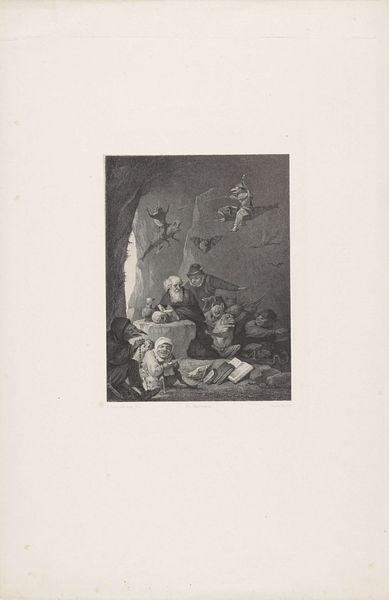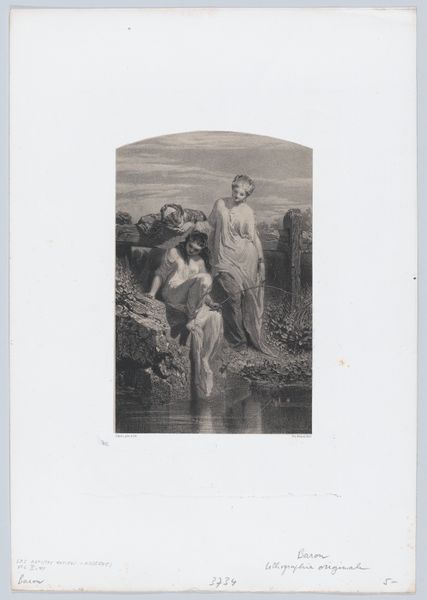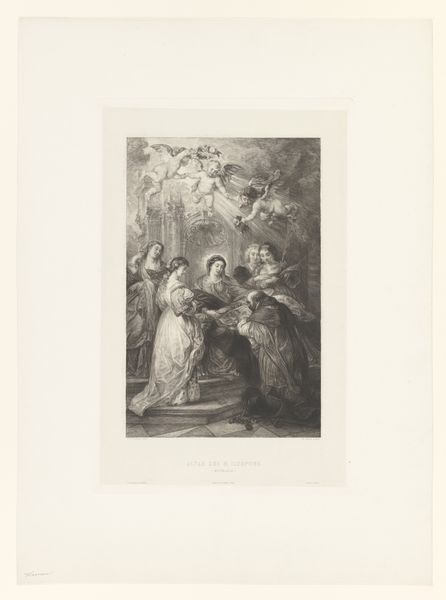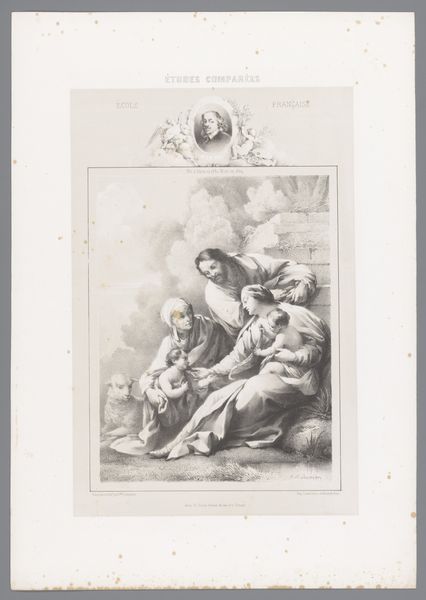
Dimensions: Sheet: 17 5/8 × 12 5/16 in. (44.8 × 31.3 cm) Image: 8 1/8 × 6 7/8 in. (20.7 × 17.4 cm)
Copyright: Public Domain
Editor: This is Henri-Charles-Antoine Baron's "The Madrigal," dating from 1850-1855, currently held at the Met. It's an engraving, so it makes me think about the work and skill that goes into each line. What strikes you most about this print? Curator: For me, the immediate question is: What did prints *do* during this period? Beyond the aesthetics, the reproduction process democratized imagery, impacting consumption. An engraving like this served as a tool for circulating ideas, stories, and styles among a burgeoning middle class hungry for visual narratives. How does that impact our understanding of Romanticism? Editor: So, beyond the romantic scene, you're drawn to its role in wider society at the time? Did this mean skilled engravers became like early photojournalists, shaping public taste and thought? Curator: Precisely! Consider the materials—paper, ink, metal plate. Each element tells a story about 19th-century industrial practices and access to resources. Romanticism often idealized the individual, but Baron's print exists because of industrial means and mass production. Do you see any potential tension there? Editor: I do now. The idealized romance presented has material roots in, almost relies on, mass production to even exist on that scale. That adds another layer to the interpretation of this scene that would've been widely consumed. Curator: Indeed. By considering the material reality of art production, we can unpack broader social and economic relationships shaping art's very being in the world, and reflect critically on what Romanticism became. Editor: That's fascinating. I'll definitely be looking at prints differently from now on. Considering the materials and context of production makes the image a richer source.
Comments
No comments
Be the first to comment and join the conversation on the ultimate creative platform.
